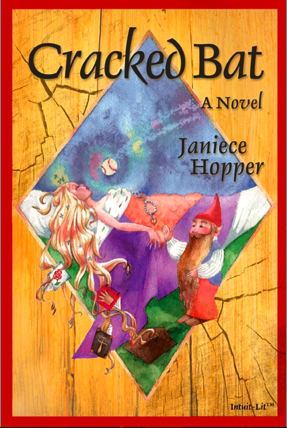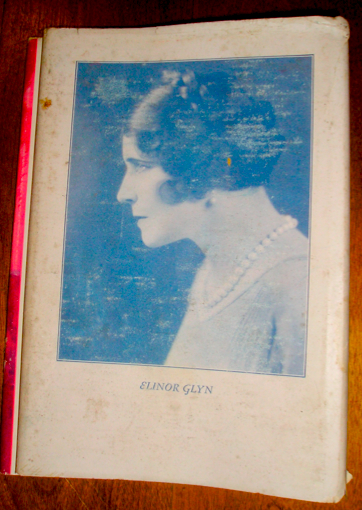I’m rather tired today, but since we’ve been talking about such important, fundamental issues lately — showing, rather than telling; constructing a narrative; narrative voice; increasing tension and conflict — I’m eager to push ahead.
I know that many, if not most, came first to Author! Author! looking for guidance on marketing issues such as querying, pitching, and submission, so the Spring of Craft might come as a bit of a surprise. As a book doctor, though, I have to regard craft issues as integral to marketing — after all, a cliché-ridden first page or a storytelling glitch on page 5 has spelled the doom of untold submissions under the ever-watchful eye of Millicent the agency screener.
Basically, I think it’s important for writers to pay attention to both the craft and marketing sides of the equation — and that those bizarre implications we’ve all heard at conferences that a good writer can focus on one to the exclusion of the other are just wrong.
Most of the time, the latter argument veers toward the craft side (as in, a good book will always find a home, apparently magically, regardless of how or even if its author promotes it), so much of the time, I blog under the assumption that my readers already have a pretty firm grasp of the artistic side of the equation. Think of the recent spate of posts as my attempt to balance the equation a little.
I assure you, I haven’t abandoned more overt marketing concerns permanently — and if you’re looking for advice on how to write a query letter, synopsis, etc., before I veer back in the other direction, never fear: you’ll find fairly specific categories in the lengthy list on the right-hand side of this page, under the monthly listings. Also, this blog is searchable for specific terms — check out the wee box in the upper right-hand corner.
For the sake of long-term planning, though, let me ask a question: are many of you planning to pitch at conferences in the months to come? To put it another way, how many of you would LIKE for me to devote a few weeks’ worth of posts to pitching tips between, say, now and the Fourth of July?
I ask because I’ve blogged quite a bit about pitching over the last couple of years (see the many, many categories on it in the list at right), and while I usually like to take a run at it again in early summer, I don’t want to bore my long-term readers into a collective stupor. Especially if that means cutting this jolly interesting series on craft shorter than I’d like.
So if you have a strong opinion either way about a run-down on pitching, please leave a comment, so I can get a sense of popular opinion.
All right, back to craft.
Today, I shall be dealing with a manuscript problem that is frequently invisible to the writer who produced it, yet glaringly visible to a professional reader, for precisely the same reason that formatting problems are instantly recognizable to our pal Millicent: after you’ve see the same phenomenon crop up in 75 of the last 200 manuscripts you’ve read, your eye gets sensitized to it.
I’m talking, of course, about those most cut-able of sentences, statements of the obvious. If you’ll take the trouble to read on, I shall give you an example.
I just heard some of you out there chuckle — you caught me in the act, didn’t you?
Give yourself a gold star for the day if you caught it: the second sentence of the previous paragraph IS an example of a self-evident proposition — and thus could have been cut with absolutely no cost to the text. Knowing that I am a writer addicted to giving examples, where else would my faithful readers look for further explanation other than later in the text? To the PREVIOUS paragraph?
Lest that seem like an over-reaction to an innocent line of text, allow me to give you a peek into the professional reader’s world: when you’re reading in order to catch mistakes — as every agency screener, agent, editor, and contest judge is forced to do, faced with mountains of submissions — you’re inclined to get a mite testy. Occupational hazard.
Why? Well, to maintain the level of focus necessary edit a manuscript really well, it is often desirable to keep oneself in a constant state of hyperirritable reactivity. (You thought it was EASY to continue to care about comma placement enough to wax poetic in the margins about it?)
To a professional reader in such a state, the appearance of a self-evident proposition on a page is like the proverbial red flag to a bull; the reaction is often disproportionate to the offense.
Don’t believe me? Here’s a list of some things professional readers have been known to howl at the pages in front of them, regardless of the damage eardrums belonging to the inhabitants of adjacent cubicles:
*In response to the innocuous line, He shrugged his shoulders: “What else could he possibly have shrugged? His kneecaps?” (Insert violent scratching sounds here, leaving only the words He shrugged still standing in the text.)
*In response to the innocent statement She blinked her eyes: “The last time I checked, eyes are the only part of the body that CAN blink!” (Scratch, scratch, scratch.)
*In response to The queen waved her hand at the crowd: “Waving ASSUMES hand movement! Why is God punishing me like this?” (Scratch, maul, stab pen through paper repeatedly.)
And that’s just how the poor souls react to logically self-evident statements on a sentence level. Assertions of the obvious on a larger scale that send them screaming into their therapists’ offices, moaning that all of the writers of the world have leagued together in a conspiracy to bore them to death.
We haven’t, have we? I missed the last Writers’ World Domination meeting, and no one seems to be able to find the minutes.
Much of the time, self-evident statements are the brainchildren of that niggling authorial anxiety that has kept rearing its under-groomed head throughout much of our recent discussion of narrative construction, not trusting the reader.
In this case, not trusting the reader to be intelligent enough to figure out what’s going on without extensive and meticulous explanation. As in:
As Alison walked into the crowded movie premiere, she noticed that there were so many people there that few seats were left. She would need to move fast to grab the necessary three for herself and her two friends still parking the car in the garage, Georgette and Petunia. She hurried, scanning the rows for empty seats.
Fortunately, this was a movie screening in the greater Seattle area: people had seated themselves in a sort of mohawk down the middle of the theatre, in chairs so directly under the geometric center point of the room that had some enterprising engineer dropped a plumb line from the ceiling and measured seating distribution, the exercise would have revealed a pleasing symmetry on other side of the line beginning four rows back. People could not have seated themselves more evenly had they been posing collectively for a Rorschach ink blot.
Passing down the side aisle as swiftly as the packed throng allowed, she found three seats together in the front row, just in front of the podium where the film’s director would no doubt be speaking with in a few short minutes, when the event actually began. She sat down, spreading her coat over the seat to her left and placing her purse in the seat to her right.
The bespectacled youth in the seat beyond that glanced up from his film festival program, which listed all of the features with which a greedy theatre-goer could conceivably gorge himself over the next three weeks. In response to Alison’s query about whether the seat between them was taken, he replied somewhat cryptically, “Have you seen the new Indiana Jones film yet?”
Since it had been released only that day, she had not; she wondered how young he was, to still attach value to seeing a blockbuster a few hours before anyone else. “No — wouldn’t I have to be seeing it now?”
“I saw it,” the young man said smugly. “At ten o’clock this morning. I got up at eight so I could stand in line.”
Not a particularly scintillating story, is it? Partly, it’s because it’s a fairly accurate description of a few minutes of my evening — I’m just returned from the Seattle International Film Festival’s screening of THE BATTLE IN SEATTLE; if you guessed it was about the WTO protests, you’re the kind of reader an author may safely trust to extrapolate the extremely likely correctly — and if you guessed that this might have been the world’s most sympathetic audience for this particular story, take two gold stars out of petty cash.
But mostly, what weighs down this anecdote is the unnecessary explanation. At the risk of creating my own Rorschach pattern, here’s the same passage as a professional reader would see it, with the extraneous obvious crossed out. Just for fun, I’m going to add in bold what Millicent would be muttering under her breath as she read:
As Alison walked into the crowded movie premiere, she noticed that there were so many people there that{how could it be crowded WITHOUT a whole lot of people there?} few seats were left. She would need to move fast to grab the necessary three for herself and her two friends still parking the car in the garage{what else would they be parking — and is the reader honestly supposed to be astonished by the choice of parking venue? Where were they supposed to park, in the coat check room?, Georgette and Petunia. She hurried, scanning the rows for empty seats.
Fortunately, this was a movie screening in {how many times do we need to be told this?} the greater Seattle area: people had seated themselves in a sort of mohawk down the middle of the theatre, in chairs {on what else would they be sitting in a theatre?} so directly under the geometric center point of the room that had some enterprising engineer dropped a plumb line from the ceiling and measured seating distribution, the exercise would have revealed a pleasing symmetry on other side of the line beginning four rows back. People could not have seated themselves more evenly had they been posing collectively for a Rorschach ink blot.
Passing down the side aisle as swiftly as the packed{If the narrative says one more time that there were a lot of people in the room, I’m going to throw my mug of coffee across the room.} throng allowed , she found three seats together in the front row, just in front of the podium where the film’s director would no doubt be speaking with in a few short minutes, when the event actually began. She sat down, {implied in what happens next, surely} spreading her coat over the seat to her left and placing her purse in the seat to her right. {Yawn. Wake me when something happens.}
Add here so we can tighten the next paragraph: “Is this seat taken?” she asked.
The bespectacled youth in the seat beyond that glanced up from his film festival program, which listeding all of the features with which a greedy theatre-goer could conceivably gorge himself over the next three weeks. In response to Alison’s query about whether the seat between them was taken, he replied somewhat cryptically, {show it being cryptic instead} “Have you seen the new Indiana Jones film yet?”
Since it had been released only that day, she had not; she wondered how young he was, to still attach value to seeing a blockbuster a few hours before anyone else. “No — wouldn’t I have to be seeing it now?”
“I saw it,” the young man said smugly. “At ten o’clock this morning.”
That’s quite a lot of omission-worthy verbiage, isn’t it? Take another gander at what Millicent wanted to cut, and it’s clear that the problems here go beyond unnecessary explanation: the edited bits slow the story considerably, are virtually conflict-free, and, taken as a group, aren’t particularly interesting. No one would miss them if they were cut, and Millicent would cry, “Hosanna!”
The omittable obvious is particularly common in dialogue — and, as is so often the case, the world of film provides some gorgeous examples for our edification.
Take, for instance, the phenomenon film critic Roger Ebert has dubbed the Seeing-Eye Man: after the crisis in an action film has ended, the male lead embraces the female lead and says, “It’s over,” as though the female might not have noticed something as minor as Godzilla’s disappearance or the cessation of gunfire or the bad guys dead at their feet. In response to this helpful statement, she nods gratefully.
Or the cringing actor who glances at the sky immediately after the best rendition of a thunderclap ever heard on film: “Is there a storm coming?”
Taken one at a time, such statements of the obvious are not necessarily teeth-grinding events — but if they happen too often over the course of the introductory pages of a submission, they can be deal-breakers for Millicent.
You’re better off cutting ALL of them — and yes, it’s worth a read-through (IN HARD COPY, anyone?) to search out every last one. Yes, even if your manuscript does not fall into this trap very often.
At the risk of sounding like the proverbial broken record: remember, you have absolutely no control over whose submission a screener will read immediately prior to yours. Even if your submission contains only one self-evident proposition over the course of the first 50 pages, if it appears on page 2 and Millicent just finished wrestling with a manuscript where the obvious is pointed out four times a page, how likely do you think it is that Millie will kindly overlook it amongst the multifarious wonders of your pages?
You’re already picturing her astonishing passersby with her wrathful comments, aren’t you? If not actually goring them with her horns.
The trouble is, virtually always, these obvious statements appear to the writer to be simple explanation. Innocuous, or even necessary. But provide too much information about a common experience or everyday object, and the line between the practical conveyance of data and explaining the self-evident can become dangerously thin.
I’ve been using bald examples so far, but let’s take a look at how subtle self-evidence might appear on a page:
The hand of the round clock on the wall clicked loudly with each passing second. Magruder ate his pie with a folk, alternating bites of overly-sweetened Ollieberry with swigs of coffee from his mug. As he ate, farmers came into the diner to eat lunch, exhausted from riding the plows that tore up the earth in neat rows for the reception of eventual seedlings. The waitress gave bills to each of them when they had finished eating, but still, Magruder’s wait went on and on.
Now, to an ordinary reader, rather than a detail-oriented professional one, there isn’t much wrong with this paragraph, is there? It conveys a rather nice sense of place and mood. But see how much of it could actually be cut by removing embroideries upon the obvious:
The round clock on the wall clicked loudly with each passing second. Magruder alternated bites of overly-sweetened Ollieberry pie with swigs of coffee. As he ate, farmers came into the diner, exhausted from tearing the earth into neat rows for the reception of eventual seedlings. Even after they had finished eating and left, Magruder’s wait went on and on.
The reduction of an 85-word paragraph to an equally effective 59-word one may not seem like a major achievement, but in a manuscript that’s running long, every cut counts. And the shorter version will make the Millicents of the world, if not happy, at least pleased to see a submission that assumes that she is intelligent enough to know that generally speaking, people eat pie with cutlery and drink fluids from receptacles.
This is one of those areas where it honestly is far easier for a reader other than the writer to catch the problem, though, so if you can line up other eyes to scan your submission before it ends up on our friend Millicent’s desk, do. And not casually, either: this requires some advance preparation.
As if all preparation weren’t in advance by definition.
Hand your first reader the biggest, thickest marking pen in your drawer, and ask her to make a great big X in the margin every time the narrative takes the time to explain that rain is wet, of all things, that a character’s watch was strapped to his wrist, of all places, or that another character applied lipstick to — wait for it — her lips.
I am now going to post this blog on my website on my computer, which is sitting on my desk. To do so, I might conceivably press buttons on my keyboard or even use my mouse for scrolling. You never can tell.
Believe me, Millicent can — trust her to do it. Keep up the good work!










